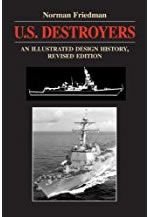USS Bell (DD-95) and
Curtiss NC-4, Azores, 1919
|
|
USS Bell (DD-95) was a Wickes class destroyer that escorted convoys across the Atlantic late in the First World War, but entered the reserve in 1922 and was never recommissioned.
The Bell was named after Henry Haywood Bell, a US naval officer who served under Admiral Farragut during the American Civil War, and who served in the Far East from 1866 until his accidental drowning in 1868.
The Bell was laid down on 16 November 1917 at Quincy, Mass, launched on 20 April 1918 and commissioned on 31 July 1918.
Late in the summer of 1918 the Bell entered service on the US East Coast, escorting convoys from New York to the mid-Atlantic, where the Western Escort handed over to the European based Eastern Escort.
On 1 October 1918 the Bell left the US as part of the escort for Troop Convoy Group 70 (De Kalb, George Washington, Armagh, Coronia and Ulysses). She spent 9-11 October at Ponta Delgada in the Azores, and then continued on across the Atlantic, arriving in Brest on 15 October. She was used to escort troop convoys into Brest, although this late in the war it is doubtful if any of the troops involved actually reached the front. Her captain during this period was Douglas L. Howard, who was her first captain, and remained with her until April 1919.
On 29 November the Bell left Brest to return to the Azores to escort President Wilson on the last stage of his voyage across the Atlantic. She reached the islands on 3 December, and the President's convoy left for France a week later, reaching Brest on 13 December.
Anyone who served on her from 12 August-11 November 1918 qualified for the First World War Victory Medal.
The Bell returned to the United States in December 1918-6 January 1919. She joined the Atlantic Fleet and served on the US East Coast and the West Indies. In May 1919 she helped support the trans-Atlantic flight of the Curtiss NC-4, from a base at Ponta Delgada on the Azores.
The Bell was decommissioned on 21 June 1922 and placed out of commission at Portsmouth, New Hampshire. She was struck off the Navy List on 25 January 1937 and sold for scrap on 18 April 1939.
Displacement (standard) |
|
Displacement (loaded) |
|
Top Speed |
35kts design |
Engine |
2 shaft Parsons turbines |
Range |
2,500nm at 20kts (design) |
Armour - belt |
|
- deck |
|
Length |
314ft 4.5in |
Width |
30ft 11.5in |
Armaments |
Four 4in/ 50 guns |
Crew complement |
100 |
Launched |
20 April 1918 |
Commissioned |
31 July 1918 |
Sold for scrap |
18 April 1939 |
 U.S. Destroyers: An Illustrated Design History, Norman Friedmann .
The standard history of the development of American destroyers, from the earliest torpedo boat destroyers to the post-war fleet, and covering the massive classes of destroyers built for both World Wars. Gives the reader a good understanding of the debates that surrounded each class of destroyer and led to their individual features.
U.S. Destroyers: An Illustrated Design History, Norman Friedmann .
The standard history of the development of American destroyers, from the earliest torpedo boat destroyers to the post-war fleet, and covering the massive classes of destroyers built for both World Wars. Gives the reader a good understanding of the debates that surrounded each class of destroyer and led to their individual features.